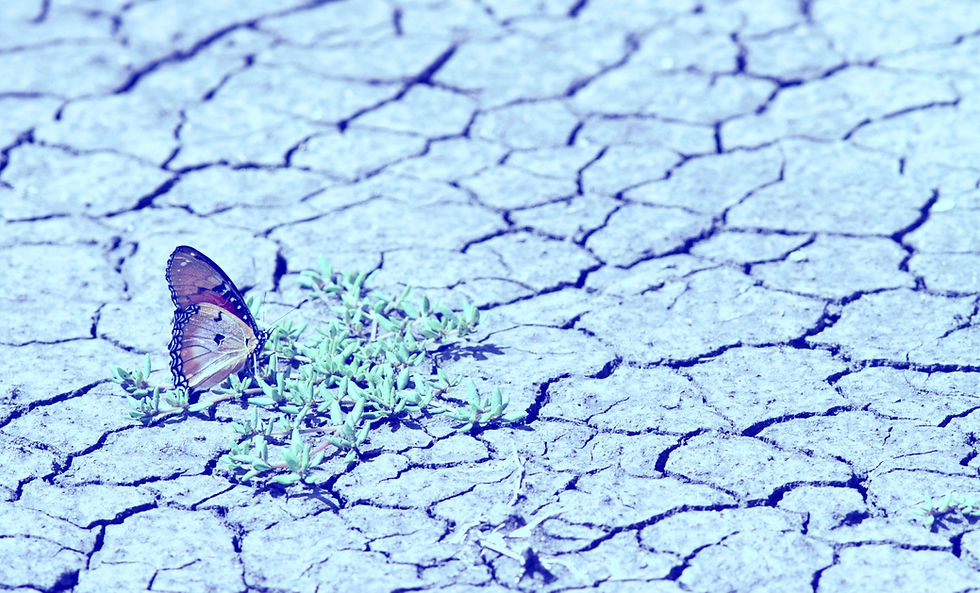
We’ve all heard the chaos theory where a butterfly flaps its wings over a flower in
China which in turn causes a thunderous hurricane on the other side of the planet.
The modern supply chain is not unlike that idea.
Just like nature, much of our global economic production is organized around
a very complex system of interdependent connections. Supply chains facilitate
the production and distribution of everything from cars to computers,
life-saving medicines & vaccines, food, building materials, everything.
End products have thousands of parts and ingredients that have to be sourced
from far flung geographies all around the world. Usually, these supply chains are
well-oiled machines that deliver everything as efficiently and cost-effectively as possible.
Now imagine a particularly stormy winter has blown millions of tons of sand
into one of the world’s busiest shipping lanes.
And although, not many of us had desert winds in the Middle East on our
mind at the beginning of the year. By the evening of March 24th, when a
single tanker ran aground in the Suez Canal, there’s a good chance climate
change and its resulting storms were suddenly top of mind.
In no time, a panic swept across the globe as hundreds of container ships
trying to pass through the vital seaway had to anchor. And wait.
That’s just one instance. Questions about supply chain risk and resilience
have been raised for years. After the pandemic hit, that talk turned into screaming sirens and alarms. Just how fragile was our well-oiled supply chain machine?
By now, there can be no doubt that climate change is having a devastating
effect on infrastructure, freight and logistics here in the US. Climate has
become the weak link in our supply chain.
Extreme rainfall, huge wildfires, level 4 & 5 hurricanes, wind storms and tornadoes -
all are expected to disrupt production and distribution up to 3 times the
current levels by 2030.
Damage to assets and facilities. Impassable bridges and roads.
Loss of power or lack of fuel. Critical systems destroyed.
Obstacles to cash flow.
Currently, our supply chains and the infrastructure that support them are
designed for a stable climate. As these hazards grow and evolve, we need to
adapt and invest in ways to protect ourselves from climate risks.
Technology is already coming online that’s certain to be a game-changer
for freight transportation and supply chain management.
Picture emerging applications that will offer up-to-the-minute risk
assessments on every single shipment. Or threat levels for every lane,
on any given day. Weeks ahead, your phone receives texts that a potential
weather issue could disrupt your warehouse facility.
Storm tracking, natural weather events, catastrophic fires, flood waters
would all be reported on a very granular level – “I-40 at State 273 are impassible. Reroute your freight through the frontage road.”
We’re talking data intelligence on every climate occurrence, even things
that don’t seem climate change related. Events like infrastructure construction,
a police shutdown on a major interstate. power outages, or even a fuel
shortage because of a terrorist threat to the local petroleum distributor.
These types of threats are becoming more commonplace.
And they have huge implications to the production and movement of industry.
Think back to our butterfly in China. One little problem say, in the availability
of diesel fuel in Georgia – means your freight goes nowhere.
Which in turn creates delays, backlogs, angry customers, loss of income,
fewer contracts, and on and on.
You need better decision making on these very fluid, day-to-day,
make-or-break situations to ensure you and your company are ready.
Supply disruptions always have a cascading effect.
Especially on the unprepared.
- Jim Pearson is the President & Founder of JTR Logistics.
Transportation professionals who expertly navigate the latest technologies while offering decades of experience & know-how. People who always get ship done.

Comments